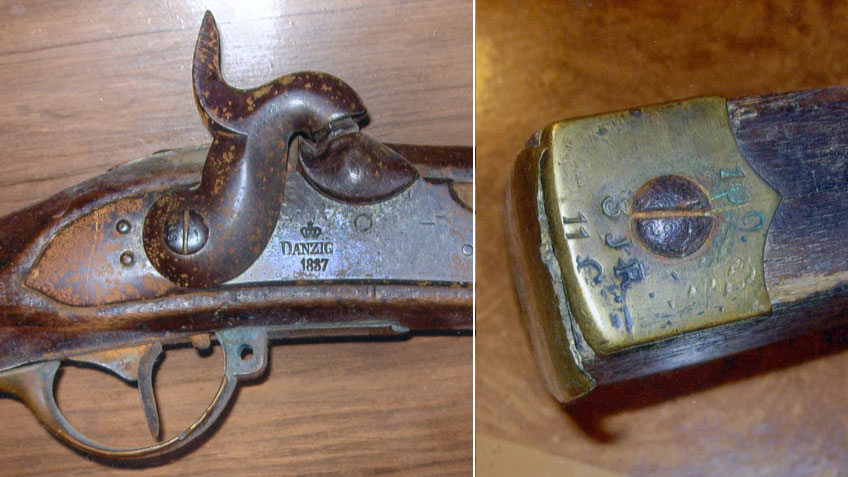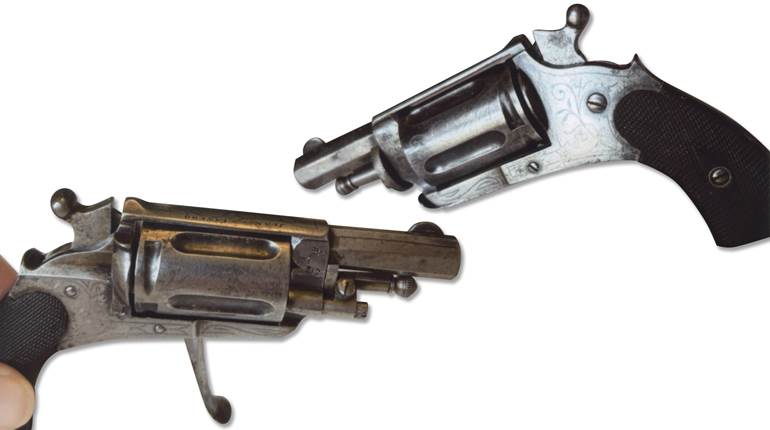
Q: I’ve acquired an interesting firearm and need help finding more information about it, since my library searches have yielded limited results. The lockplate is stamped “DANZIG 1837” with a crown marking above. It appears to be authentic, but the interesting part is that the gun is a sidelock, percussion musket. My research shows this to be an alteration from its original state. Is there more to know?
A: Your gun is the Prussian Model 1809 flintlock musket made at the government armory in Danzig (now Gdansk, Poland). Beginning in 1839, almost all were converted to a percussion ignition system, as was yours.
The numbers stamped on the tang of the buttplate show its military use. The “3JR” below the screw probably indicates the 3rd Infantry Regiment. The other numbers may be the rack number of this gun or perhaps indicate its use by a different unit during its lifetime. The metal piece sticking out from the front of the stock fits into an opening at the base of a bayonet to lock it in place.
The U.S. Ordnance Dept. records show that the Union forces in the American Civil War imported 142,823 of these 1809/1839 muskets in 1861 and 1862 when sold as surplus by the Prussian army. As a result, these are quite available for Civil War ordnance collectors.
The collectors call the guns “Potsdam Muskets” because the great majority of them were made at the Potsdam Armory and have “POTSDAM” where “DANZIG” is on the lockplate. Several other armory names can be found, e.g., Suhl, Saarn, et al.
—Michael F. Carrick




































